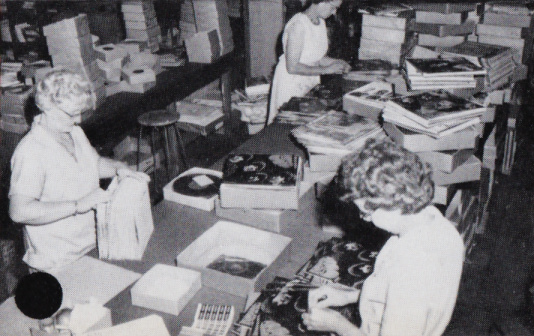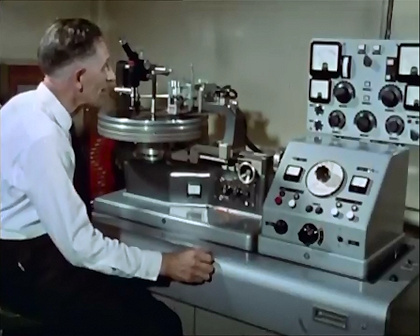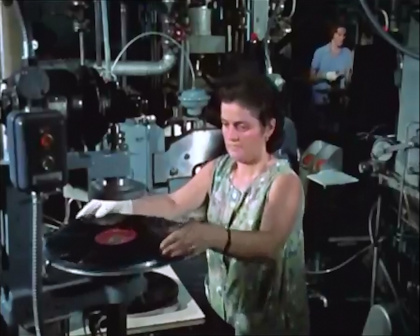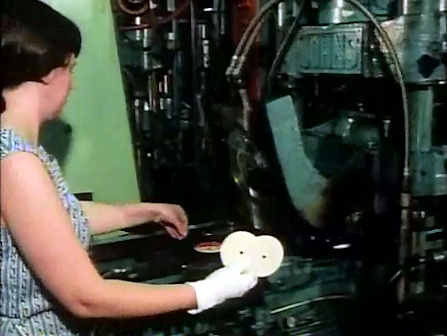A Short Overview Of Local Manufacture
Being a subsidiary of EMI UK, EMI (Australia) would receive advice of upcoming UK releases with the option of importing copies, manufacturing copies locally, or ignoring altogether (only an option if the release had not charted highly in the UK). EMI (Australia) primarily manufactured Beatles records locally, releasing them through its Parlophone label.
In addition to releasing the core UK Beatles catalogue, EMI (Australia) exercised its discretion to issue its own locally-conceived Beatles records. EMI (Australia) learnt very quickly that as far as The Beatles were concerned, multiple releases were better than one: between 1963 and 1970, EMI (Australia) released 30 singles (of which 18 were "double A-sides"), 18 EPs and 17 LPs, against EMI UK's 22, 13 and 13 respectively.
UK Parlophone LPs added to the Australian Parlophone catalogue maintained the UK catalogue number, but with the Australian country code "O" suffixed to the mono and stereo prefix codes, for example, "PMC 1202" was catalogued locally as "PMCO 1202". LPs issued locally by Parlophone that were not on the UK Parlophone catalogue utilised a separate local catalogue number range, beginning at PMCO/PCSO 7500.
EMI (Australia) pressed both mono and stereo LPs throughout the 1960s, until declining sales led to the deletion of mono LPs—where stereo alternatives existed—in June 1969. By that time the mono releases of The Beatles and Yellow Submarine had sold a mere 5,000 and 1,300 copies respectively.
Like LPs, UK Parlophone extended plays (EPs) added to the Australian Parlophone catalogue maintained the UK catalogue number, but with "O" suffixed to the "GEP" prefix code. EPs issued locally by Parlophone that were not on the UK Parlophone catalogue, including UK titles with locally modified track lists, utilised a separate local catalogue number range, beginning at GEPO 70001.
Singles released in Australia on the Parlophone label were allocated a number in the 8000 range, starting with the letter "A". From A8083, all Parlophone single numbers ending with "3" were either used by, or reserved for, The Beatles. In March 1968, EMI (Australia) ended the separate cataloguing systems used on its in-house and distributed labels and created a unified numbering system, beginning at 8301. The 8000 series was chosen because Parlophone's catalogue—the highest range in use at the time—was then numbering in the low 8000s. 'Lady Madonna'/'The Inner Light' was the last Parlophone single issued under the old numbering system.
Please read Jaesen Jones' companion book, An Overview of Australian Beatles Records (available for purchase under the "References" menu), for more information.


You can see the boxes that house the records - there's quite a few at the back and under the bench!
The lady on the left is sifting through a bundle of sleeves, while the lady at the bottom right is placing stereo stickers on her batch of sleeves; you can see the stickers on the table in front of her. The lady in the background appears to be doing the same.
In the background left there appears to be bundles of 7" records in generic EMI sleeves.
The key takeaway from this photo is the disorganisation - boxes all around. It perfectly explains the randomness of the numbered sleeves for The Beatles. It perfectly explains why late 1969 copies of Sgt Pepper's Lonely Hearts Club Band could still be housed in UK sleeves, even though the Aussie sleeve was available. The ladies just grabbed boxes of each, whatever boxes were in front of them, and away they went. When finished, they packed the records into boxes of 25 then off to warehousing.
The lathe dates to the 1950s, and may have been installed when EMI (Australia) built its new recording studios at Castlereagh Street in 1956.
The photo below left shows an employee pressing records at EMI (Australia)'s Homebush factory, early 1969, while the photo below right shows one of EMI (Australia)'s Johns presses in action, 1979, just prior to the installation of new Toshiba-EMI automatic presses. The Australian-made Johns manual hydraulic press was the workhorse of EMI (Australia), being in operation since the late 1950s.

